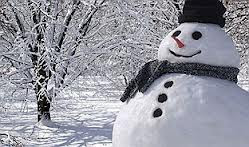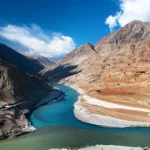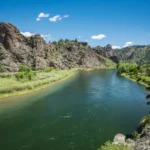
Learn some interesting facts and information about snow with our range of fun snow facts.
Snow forms when water vapor in the atmosphere freezes into ice crystals.
Snowflakes form in a variety of different shapes.
Snow is a form of precipitation, other forms of precipitation are rain, hail and sleet.
Light and fluffy snow is often called ‘powder’.
Snow continues to challenge weather experts across the country. It is still very difficult to predict and is surprisingly hard to measure once it has fallen.
Based on National Weather Service records for 1961 through 1990, Rochester, New York averages 94 inches of snow annually and is the snowiest large city in the United States. Rochester has a population more than 200,000 and annual municipal snow-removal budget of $3.7 million (1995 figures).
Snow kills hundreds of people in the United States each year. The primary snow-related deaths are from traffic accidents, overexertion, and exposure, but deaths from avalanches have been steadily increasing.
The greatest snowfall officially reported at the Phoenix, Arizona National Weather Service Office was one inch. That occurred twice. The first time was January 20, 1933. It happened again four years later on the same date.
In the western United States, mountain snow pack contributes up to 75 percent of all year-round surface water supplies.
The commonly used ten-to-one ratio of snowfall to water content is a myth for much of the United States. This ration varies from as low as 100-to-one to as high as about three-to-one depending on the meteorological conditions associated with the snowfall.
Nationwide, the average snowfall amount per day when snow falls is about two inches, but in some mountain areas of the West, an average of seven inches per snow day is observed.
Buffalo, New York, is a close runner-up in terms of U.S. large cities with the most snow. A 39-inch snowfall in 24 hours in early December 1995 cost the city nearly $5 million for snow removal.
An average snowflake is made up of 180 billion molecules of water.
Around 12% of the Earth’s land surface is covered in permanent snow and ice.
Each year an average of 105 snow-producing storms affect the continental United States. A typical storm will have a snow-producing lifetime of two to five days and will bring snow to portions of several states.
All snowflakes have six sides.
Rochester, New York is the snowiest large city in the U.S., averaging 94 inches of snow a year.
Chionophobia is a fear of snow.
Snow is actually colorless. What little sunlight is absorbed by snow is absorbed uniformly over the wavelengths of visible light thus giving snow its white appearance.
People buy more cakes, cookies and candies than any other food when a blizzard is in the forecast.
A blizzard occurs when you can’t see for 1/4 mile. The winds are always 35 miles an hour or more. The storm must last at least 3 hours to be classed as a blizzard. If any of these conditions are less, it is only a snowstorm.
The average snowflake falls at a speed of 3.1 miles per hour. (5 kilometers)
Almost 187 inches of snow fell in seven days on Thompson Pass, Alaska in February, 1953, according to the National Snowfall and Snow Depth Extremes Table provided by the National Climatic Data Center.
Each year an average of 105 snow-producing storms affect the continental United States. A typical storm will have a snow-producing lifetime of two to five days and will bring snow to portions of several states.
In the early 1900s, skiers created their own terminology to describe types of snow, including the terms “fluffy snow,” “powder snow,” and “sticky snow.” Later, the terminology expanded to include descriptive terms such as “champagne powder,” “corduroy,” and “mashed potatoes.”
Fresh snow is an excellent insulator. Ten inches of fresh snow with a density of 0.07 inches, seven percent water, is approximately equal to a six-inch-layer of fiberglass insulation with an insulation R-value of R-18.
Practically every location in the United States has seen snowfall. Even most portions of southern Florida have seen a few snow flurries.
Heavy snowfalls are often called ‘snowstorms’.
Snowstorms with high winds are often called ‘blizzards’.
Snow reflects a high level of ultraviolet radiation and can cause snow blindness (photokeratitis). Sunglasses, goggles and other eye protection help absorb the ultraviolet rays.
A number of winter sports rely on snow, including skiing and snowboarding.
Recreational activities such as snowball fights, tobogganing and making snowmen are also popular in the snow.
Skis, sleds and snowmobiles are useful transport options through snow.
Snow can lower visibility, making driving conditions dangerous.
The highest snowfall ever recorded in a one year period was 31.1 meters (1224 inches) in Mount Rainier, Washington State, United States, between February 19, 1971 and February 18, 1972.









